How to clean copper?
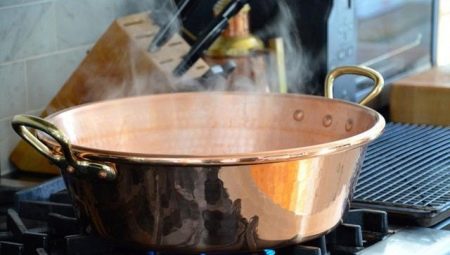
Despite the fact that the base metal is iron, and despite the fact that synthetic materials are increasingly used today, copper products are still widely used in everyday life. And even with the most careful use, any things inevitably get dirty and lose their attractiveness. How to clean copper yourself, how to return it to its original shine and beauty - these questions are of interest to a lot of people.
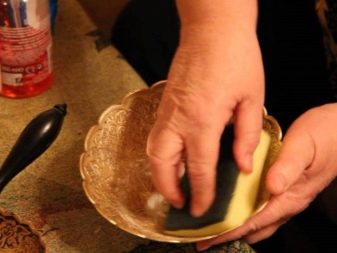
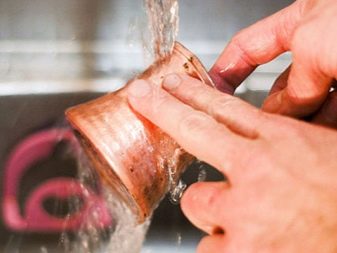
Features of cleaning copper products
Any copper object, even if it just stands at home and is not used in any way, gradually darkens and even becomes cloudy. A variety of things are made from copper and its alloys - dishes and coins, figurines and decorative ornaments, electronic components and radio components, jewelry and much more. Hence it follows that there simply cannot be a single approach to pollution.
At home, almost everything will help cleanse regular detergent. Just put the item in a container filled with hot water and add the preparation there, put a sponge or soft cloth. Using this sponge, gently scrub the product, then transfer it to another pre-prepared container, where clean water is poured. Such a simple treatment will remove most of the not too strong dirt.
... If there are neither empty containers nor enough time, rub the copper with fresh lemon juice, then rinse the metal under running warm water.

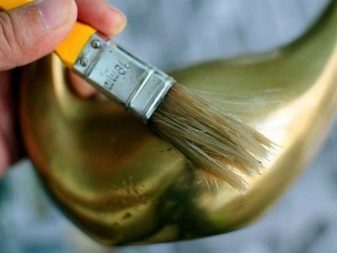
Tomato ketchup will also help to wash copper items relatively easily. It is squeezed into a deep bowl, where the dirty thing is lowered. After ten minutes, you can rinse it thoroughly, and this completes the cleaning.A dark spot can be easily removed by immersing the item in a weak solution of acetic acid (60 grams of table salt is added to it for greater effect). The container must be metal, because it must be boiled on a gas stove for at least 10 minutes.
This treatment will convert the oxides into a soluble form. Wait until the removed item has cooled down, then soak it in clean cold water, then wipe it dry with a soft cloth. Any of these methods can be used only after you test the action of the funds on a small part of the product.
Only proceed with a complete cleaning when you are sure that it will be completely safe!
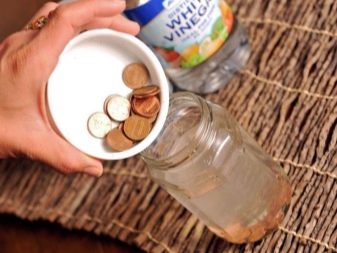
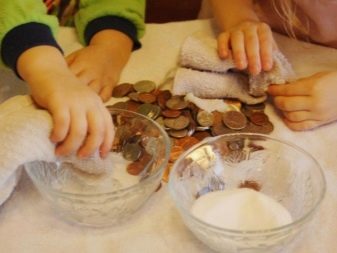
Coins
A ten percent solution of vinegar in water can quickly remove yellow plaque. When the dirt comes off, the mixture must be carefully drained, and the coins must be rinsed in warm water. Until they are rinsed, it is not recommended to take them with unprotected hands! The red layer is removed with 5% ammonia - sometimes it takes several hours to keep the copper circles in it, otherwise the original appearance cannot be returned. As always, after cleaning with any composition, rinsing in water is required.
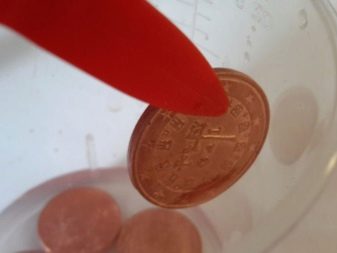
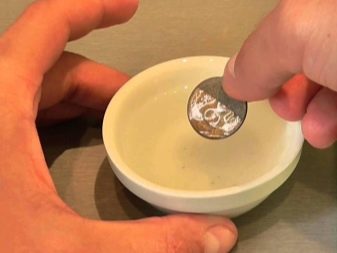
Coins often have greenish deposits. Citric acid is poured into a glass of water 1/10, and then clean water is added to the top. Then coins are carefully placed in the glass and the reaction is monitored. As soon as all the liquid acquires a green tint, the products are removed, thoroughly washed and slightly polished.
Sometimes it is quite easy to wash coins - put them in warm soapy water and let stand for a while, wipe with a sponge and dry on a clean cloth. Cleaning of copper coins with abrasives, strong preparations, concentrated acids and alkalis is inadmissible. Do not try to remove dirt by exposure to high temperatures, this can lead to melting of the product or to the loss of its strength.
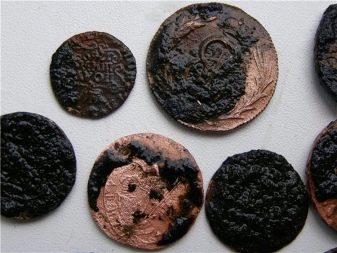
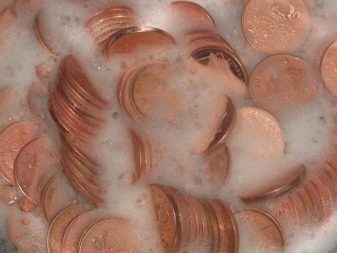
Valuables
If you need to tidy up a bracelet or antique, you need to be very careful. Bright green plaques are removed with a ten percent citric acid solution. Before cleaning, they always inspect all stains and the product itself, carefully choose a method for solving the problem. If there is no ammonia at hand, a combination of 5 milliliters of turpentine and alcohol, one milliliter of water and one gram of oxalic acid is prepared. The drug must be shaken thoroughly, with a sponge, lubricate the faded thing with it, and after 5-10 minutes, remove the rest of the mixture with a dry cloth.
If copper dishes are not completely free of green plaque, it is absolutely unacceptable to cook food in it! If the item is large and you do not have a container to put it, you need to thoroughly wipe the surface with half a lemon, then with a soft brush, and then rinse.
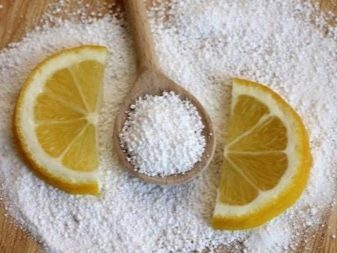

Small items
A brass cross or other small item will easily clean up with a combination of lemon juice and salt. Squeeze the juice from the fruit into a bowl (deep plate), the consistency of the mixture should be like porridge. Take a portion of the product with a soft cloth, wipe the item thoroughly until the dirt disappears. Remember to rinse and wipe dry after cleaning! If there is no time at all just fill a bowl with ketchup and leave the dirty object in it for an hour.
If a copper faucet is installed in the house, tomato paste will help to return it to its original purity. Apply it to the surface and let sit for about 30 minutes, then rinse and wipe dry.
Various small things can be wiped off with wool or cloth soaked in kerosene.

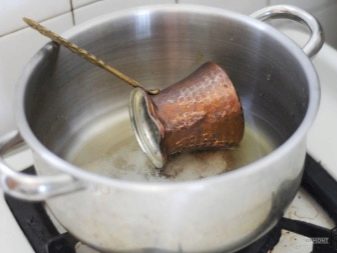
How to add shine?
Rubbing them with a mixture of any kind of flour, table salt and vinegar (in equal proportions) will bring copper objects to a shine. After wiping, the item is rinsed under the tap and wiped until completely dry. However, you can do without solutions - just take a newspaper with a black and white font. A small wad of paper will polish a tarnished surface very quickly.
It is advisable to purify chemically pure copper sulfamic acid, but if there is even the slightest impurity, this substance will cause blackening of the product. After removing the dirt and rinsing thoroughly, dry in a cool place. A combination of vinegar with salt and bran helps to remove dirt, it is simply applied to the surface and immediately wiped off with a dry cloth.
Antiques or heavily soiled items should be placed in a solution of salt and vinegar, brought to a boil and immediately removed from heat. When the liquid has cooled, the products are washed with warm clean water and dried. Rub very dirty surfaces with a cloth soaked in low concentration hydrochloric acid.
Wear rubber gloves when mixing concentrated acid with water and wear protective goggles. If possible, someone should observe the process from a safe distance. Work under a hood or outdoors. Wear a respirator when cleaning copper with acid indoors.
Polished copper can be greased with kerosene and then rubbed with crushed chalk.
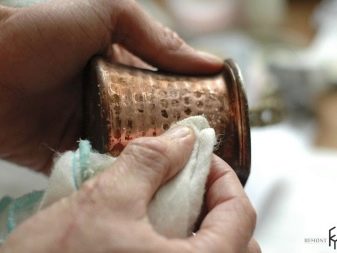
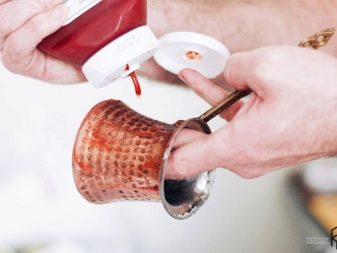
How to tidy up a samovar?
A classic copper samovar can look very elegant and attractive. But only on the condition that it is completely clean. Meanwhile, a dark film is inevitably formed on the copper surface; it is created by contact with oxygen. A faulty device, which is already suitable only for decorative purposes, must be filled with boiling water. If the samovar can still work, pour cold water into it and bring to a boil.
In the meantime, while the water heats up, prepare a 5% vinegar solution, it will help to make the outside of the appliance shiny. It is necessary to clean the outside of the samovar exactly at that moment, while it is hot. The good thing about this technique is that it guarantees no scratches on the surface.
If there is no vinegar at home, baking soda can replace it, it also removes copper oxide quite well. A soft cloth is soaked in warm water and lightly sprinkled with soda, the product is wiped in a circle, gently, slowly and without pressure. Otherwise, streaks and even scratches may appear.
A very old cleaning option with crushed brick or sand is bad because the surface of the samovar is easily scratched.

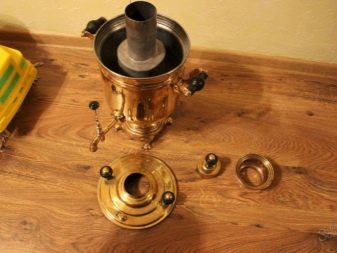
It will not be possible to remove scale on the inside of the appliance. It is eliminated like this:
- pour water;
- add citric acid;
- boil;
- after cleaning, rinse the samovar with water several times.
A slight layer of scale is removed with five grams of acid (in terms of ten liters of water), and if there is a lot of it, you need to take already 40 grams.
You will learn more about how to clean copper in the following video.








